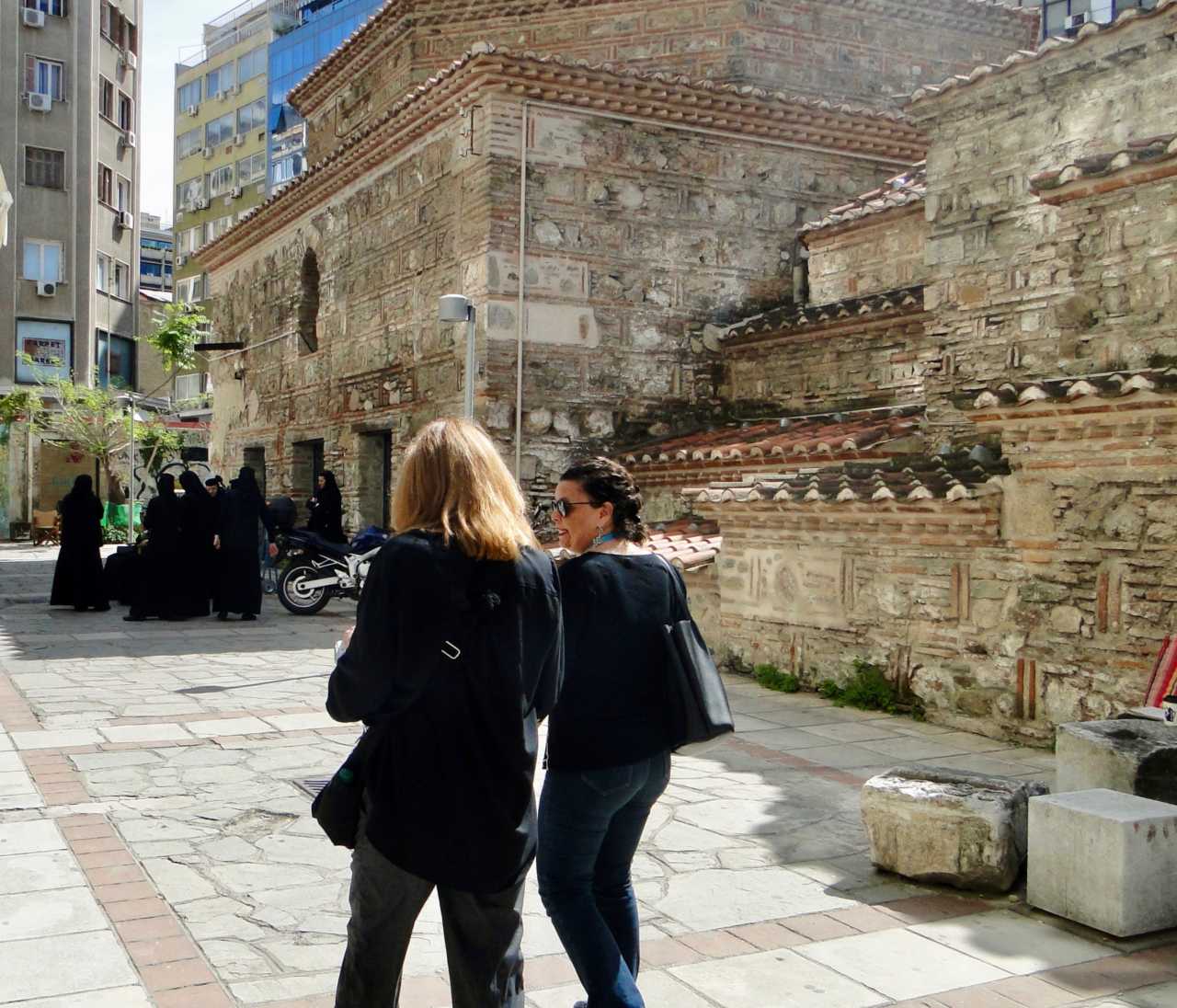Thessaloniki: breads, dried fruits, pomegranate syrup, cumin, sesame seeds, artichokes, wine, a cornucopia of smoked and cured meats and fish along with enough food vendors to create a head spinning grazing experience for any hungry visitor…and that’s just what everyone was saying 2,000 years ago.
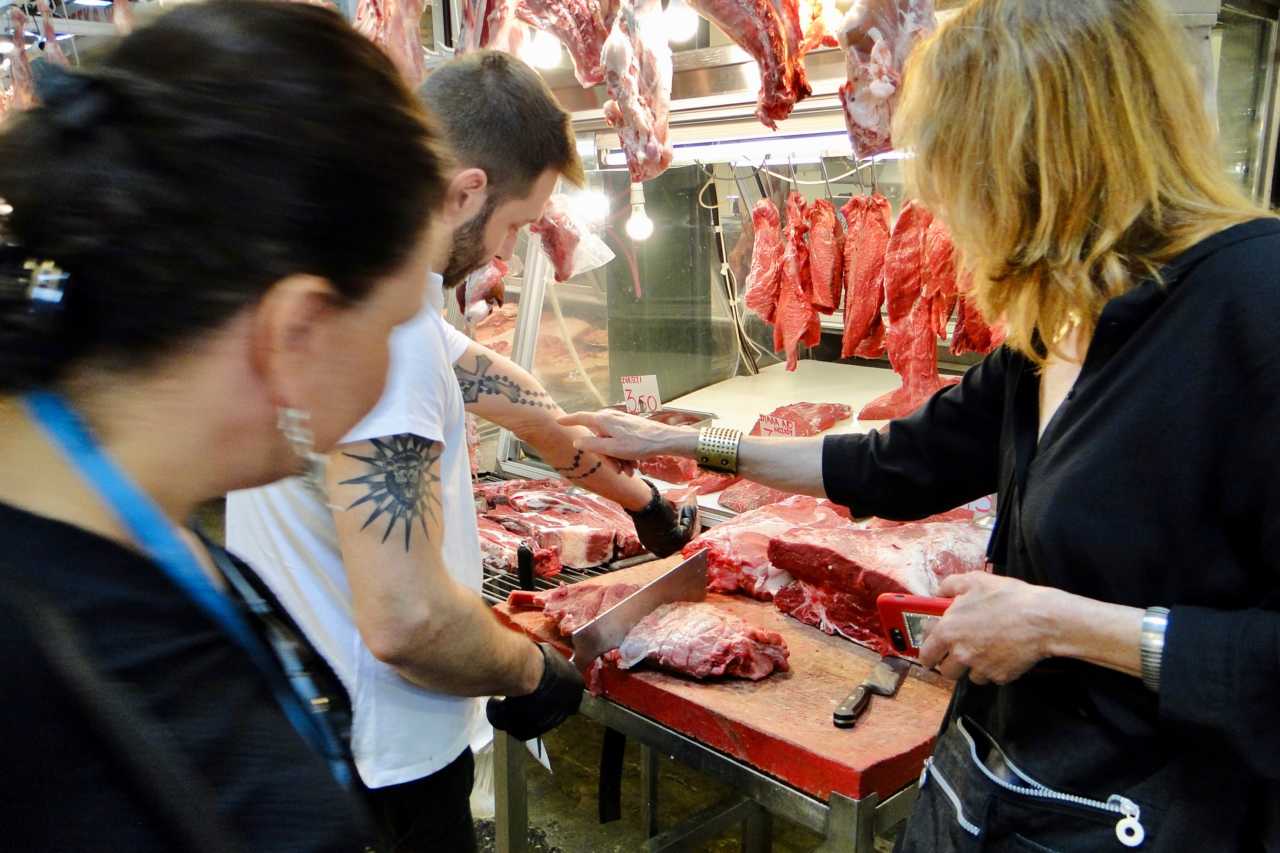
It’s gotten better. History continues to endow Thessaloniki with a stellar provenance as a culinary destination. The city is the largest in Macedonia, Greece’s second largest, the port city of the northern Aegean, gateway to the Balkans and commercially connected to Asia Minor for over 2,300 years.
This location was no accident. Thessaloniki (aka: Saloniki or Salonica) was a planned city from the start. Alexander the Great’s brother-in-law, Cassander, established the port in 315 BCE specifically to be a major distribution center for goods from the caravans on the Spice Road. It’s said Cassander was a wise husband naming the city after his wife, Thessaloniki, Alexander’s half-sister.

Alexander’s empire energized trade on the Spice Road. The Romans were equally enamored with Thessaloniki after conquest in the 2nd century BCE. It grew as an important trade-hub located on one of Rome’s most iconic roads, the Via Egnatia, which connected Byzantium (aka: Constantinople/Istanbul) to the Adriatic Sea. Today the Via Egnatia is basically the A2 toll highway.
The city’s gastronomic diversity had a jump-start since Macedonia’s agricultural output was always prodigious. Now with Alexander’s empire and the Spice Road visualize an expansion of cultivation as well as commerce.
Compound this over the next 2,000 years with being a major port for the succeeding Byzantine (Eastern Roman) and Ottoman empires. Add the historical influence and coexistence of Greek, Islamic, Jewish, Balkan and Western European communities and you have an ever-expanding plethora of ingredients with many source plants transplanted to Greece.
Sampling the Spice Road
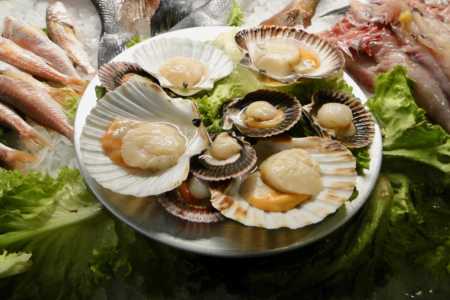
Food tours are visceral experiences. They start with your eyes and end in your mouth. Historic buildings and museums can’t offer that multi-sensory fusion with such an important facet of culture.
The reality, of course, is that even a multi-hour food tour of Thessaloniki can only provide an amuse bouche of the depth of the city’s gastronomy. Yet for the visitor it outlines a sensory path to further explore at leisure.
Anastasia Gaitanou, certified multi-lingual guide and member of the Tourists Guides Association of Thessaloniki, arranged a veritable buffet of gastronomic offerings and related backstories in the historic center. Highlights from the tour show the breadth of Spice Road commerce as food, flowers, cafes, clothing, household items and decorative objects still share time-honored locations.
Pantopolion epitomizes a Greek family grocery and possibly a Spice Road vendor. The renowned shop is not in a historic building (much of center city is post 1917 Great Fire) and it’s cramped. The foodstuffs of Greece and the Spice Road envelop you.
Their advertising term “bio store,” comparable to “organic,” would not have been necessary when the family opened in 1924. Yet even in a country abundant with prime foods, traditional grocers find it necessary to distance themselves from all too common 21st Century adulterations. The positive is the sheer abundance of bio food products available from Alonnossis white tuna to wines and a flower bulb – a type of hyacinth – marinated in olive oil.

Located directly across from the City Hotel and next to the Excelsior Hotel, the vibrant colors of Pantopolion’s produce stand draw the eyes. It’s worthy to note the number of common day produce items that are Spice Road and not “native” Greek.
Being in Thessaloniki in early May, the strawberries were at their peak. Wild strawberries are ubiquitous worldwide, but the first cultivated one’s (creating larger size) show up in France in the early 1700s. Much of the remaining produce is the product of global trade.
- Asia/Near East/ Persia: the Pomegranate, as famous in mythology as it continues to be in gastronomy, is an ancient Spice Road success in Greece.
- China/Central Asia – kiwi fruit, oranges, lemons, mandarins, peaches, nectarines.
- Africa – melons.
- Asia Minor – cherries and apples introduced by Alexander the Great
- Balkans – plums
- New World 16th century – bananas & pineapple
- Of the fruits on the stand, quince and grapes are native to the Hellenic World.
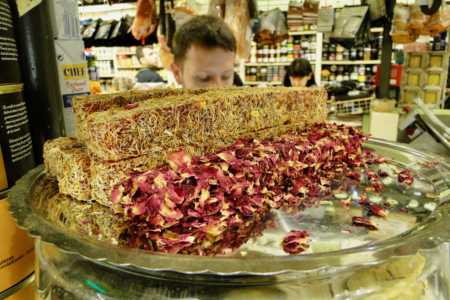
Inside Pantopolion the abundance of products available are prodigious: freshly made Rose Petal Greek (or Turkish) Delight, smoked sausages and cheeses from Metsovo in the western Pindus Mountains of Epirus, olive paste with ginger. I was assured that it was best to drink tsipouro, not wine, with any of the wide variety of salted and brined fish whose origins rest in the mist of ancient mariners.
The streets of the Lower Town concentrated along the waterfront of the Thermaic Gulf are still the gastronomic epicenter of Thessaloniki.
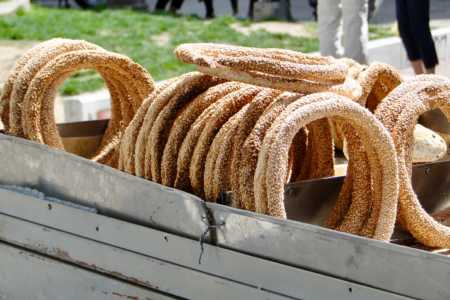
Koulouri in baskets are usually available on busy street corners – timeless tradition. This centuries-old sesame seed bread originating in Asia Minor is particularly popular in Macedonia in its thinner form. Enticing varieties – stuffed with cheese or nutella – and sizes of this Greek bread ring “bagel” are available. (Do not mistake them for bagels – koulouri are not boiled and typically are crunchy). Anyone need a baby’s teething ring?
The Ladadika was the Jewish market quarter. In the 16th century the Ottoman Empire gave asylum to thousands of Jews driven out of Spain. For 400 years Thessaloniki was the second largest Jewish city in the world, especially for Sephardic Jews. The Nazis exterminated 95% of the community in the 1940s, but their influence is embedded in Greek gastronomy.
Within the historic Ladadika district are grand, still functioning early 20th century markets. The center for Thessaloniki gastronomy for nearly a century has been the Modiano and Kapani Markets, both historic post-1917 structures. They are as close to a Spice Road experience as you will have in the 21st Century.
Although inexpensive clothing is available, so are fabrics, furnishings, spices, flowers, fruits, meats and seafood that would please a buyer of 2,000 years ago.
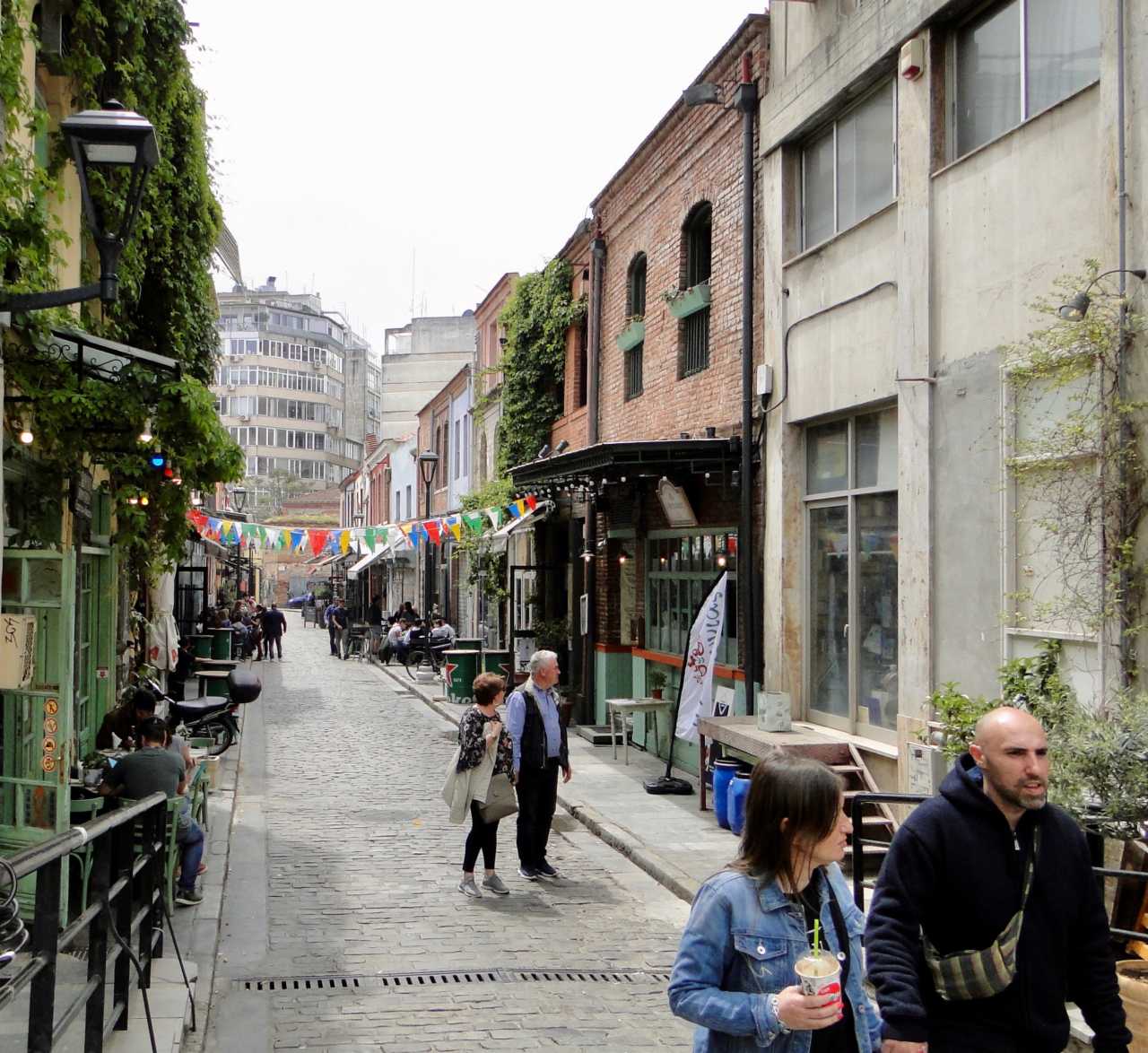
The Kapani Market exists on a site that has been a market since the 11th century yet could easily pass for a postmodern pavilion with its imaginative iron framework. The current structure is again post-1917, but within its walls the Spice Road is available whether from vendors, small cafes or tiny shops.
The Modiano family, prominent bankers among the Jewish community, constructed the imposing Modiano Market after the devastating 1917 Thessaloniki fire. It was designed by award winning architect, Eli Modiano, son of the patriarch. The vast Modiano Market building is currently under restoration, but on previous visits the tables of the textile vendors overflowed, luggage was available along with Balkan embroidered clothing and, of course, food.
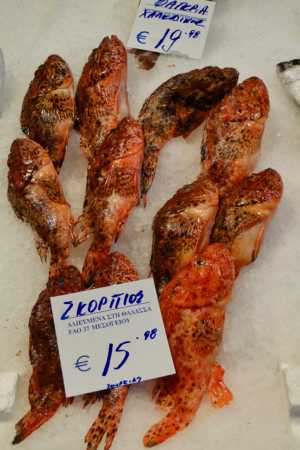
A food tour is a nibble:
- There are 160 olive varieties and Greece cultivates 29.
- Chickens are in surplus, while supplies of most other meats, including lamb, sheep and beef require imports from the Balkans, France and Italy to satisfy demand.
- Calamari is smaller, darker in color but longer than octopus.
- Crawfish have pincers.
- Candied almonds, required at Greek weddings, originated in Greece’s archenemy and Spice Road customer the Persian Empire.
- A plethora of dried fruits, nuts and seeds – especially sesame – are all legendary Spice Road convenience foods.
- Scorpion fish have “cousins” worldwide that are rarely eaten, but this is Greece. Of course it tastes good – moist – it just looks appropriate for Halloween.
Food shops, especially bakeries, some as old as the markets, are peppered throughout this area. Yet it’s not all sweets. Mobility on the Spice Road created a mindset for convenience food. A myriad of hot meat, vegetable and cheese breads and phyllo pies are readily available, affordable and enticing.
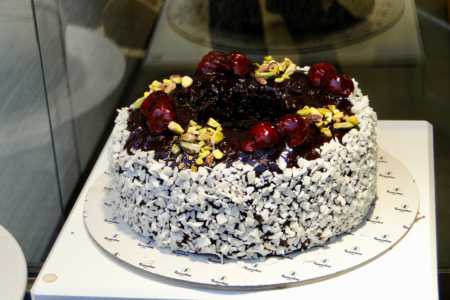
Bakery Terkenlis, since 1948, famous for its jewel-like cakes, also offers savory salads and imaginative sandwiches. Brioche bread with chestnut cream had been entirely immersed in chocolate. (Macedonia is known for its chestnuts).

Trigona Elenidi makes trigono – buttery, flaky, triangle shaped phyllo cones filled with pastry cream (a Greek cannoli?) Presented and eaten like an ice cream cone.
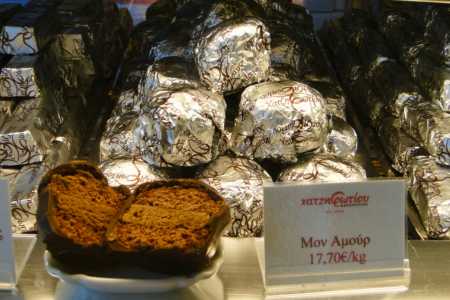
Hatzifotiou, since 1946, specializes in pourakia, light but rich wafer rolls and cookies layered with dozens of sesame tahini creams richly flavored with a diverse assortment of ingredients: chocolate, hazelnut, cherries, chestnuts. They are particularly popular at Easter/Lent when dairy products cannot be eaten.
City of cafes
Thessaloniki is known, among other things, as the city of cafes. The largest number of university students in the country, nearly 15 percent of the population, does help fill Thessaloniki’s cafes, restaurants and bars from early morning to late night. Many have beautiful views of the glinting blue sea of Thessaloniki’s vast harbor with the iconic 15th century White Tower and the city’s long waterfront promenade.
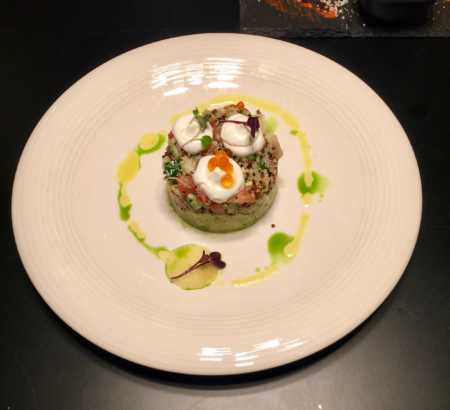
The venerable Mediterranean Palace Hotel is home to one of Thessaloniki’s newest fine-dining restaurants, Cookoo. Its ambiance of old school and post-modern fits a menu that ranges from local Greek buffalo to delicate blue crab salad. The contemporary interior is a foil to the modern cuisine’s visual appeal.
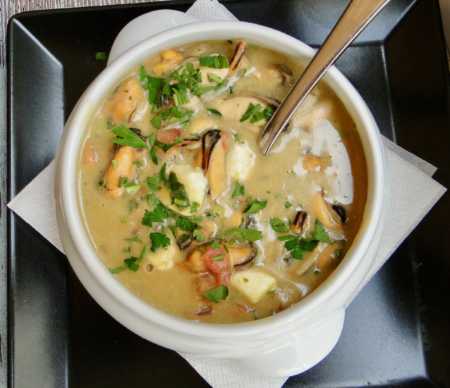
Off the waterfront the narrow streets of Lower Town remain a charming warren of restaurants and cafes. In the heart of the Ladadika, Palati Restaurant makes ageless traditional Spice Road dishes. Mussels in mustard sauce and feta captures sea, plant and dairy from diverse lands. Multiple meals at Palati prompt my requests to return.
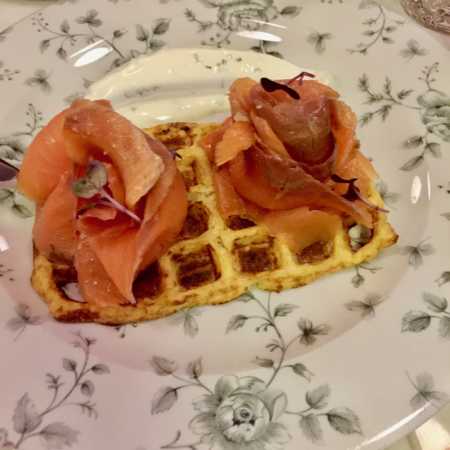
An increasing number of new boutique hotels are opening fine dining restaurants. A relaxing dinner at Charlie D. Brasserie in the Tor Hotel Group’s Excelsior Hotel included an imaginative first course of smoked salmon on a waffle and a fanciful deconstructed cheesecake with mango. Charlie D. Brasserie exuded a 1950’s New York clubby atmosphere with its sleek dusty rose tinted lines and crystal.
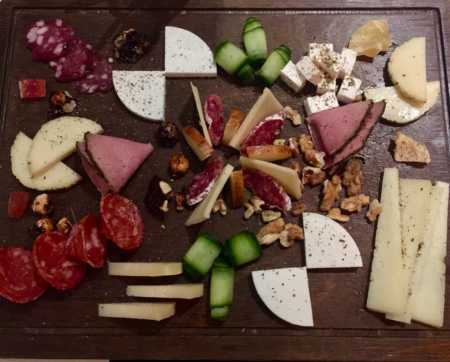
Located in what used to be (not that many years ago…) the “red light” district of the port, Kazika de Malta has created a different atmosphere – a jazz bistro with an elegant “speakeasy” vibe. Its dark wood, leather, candles reflecting off crystal creating subdued lighting, instrumentalists and vocalists evoke a romantic experience. Kazika de Malta’s earthy risotto with mushrooms and truffle oil certainly helped with that mood and the chocolate mousse cake was sufficiently decadent.
You can summarize a gastronomic region as ancient and rich as Thessaloniki only with the caveat that it’s always evolving. Now is not the future. The foods of the world are readily available, and Thessaloniki makes the possibility for enjoying them timeless.
When you go: Thessaloniki International Airport (SKG) is served through major European hubs and Greek cities. Thessaloniki is connected as well by rail and coach bus within Greece and to the Balkans.
Special thanks to Sofia Bournatzi of Pass Partout DMC and to Thessaloniki Tourism Organization for facilitating my stay, Anastasia Gaitanou for the city food tour and the hotels and restaurants mentioned for providing hospitality.
Travel with Pen and Palate every month to Greece and the world in the Hellenic News of America.
